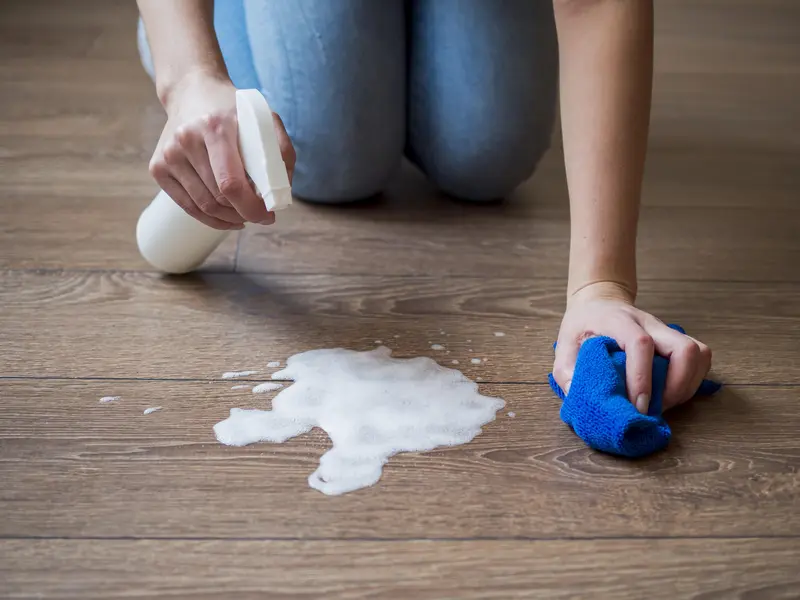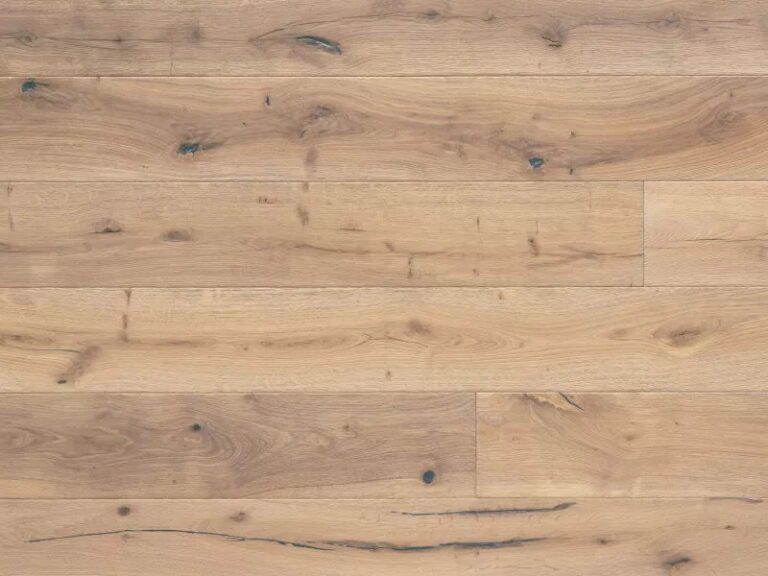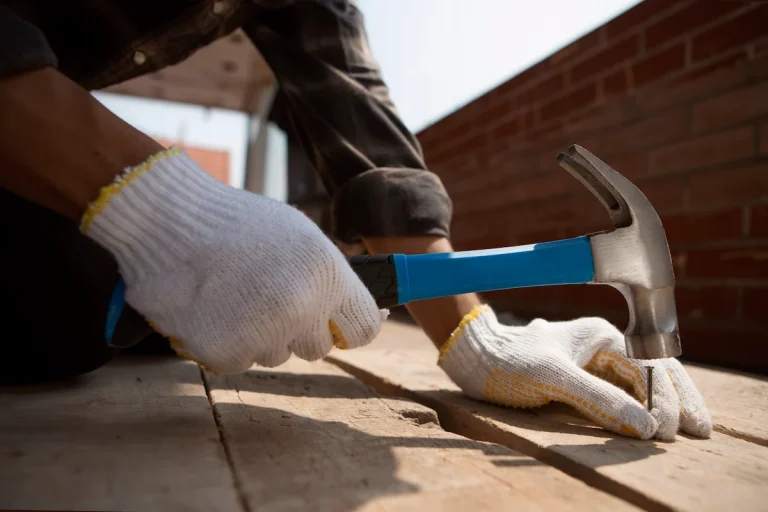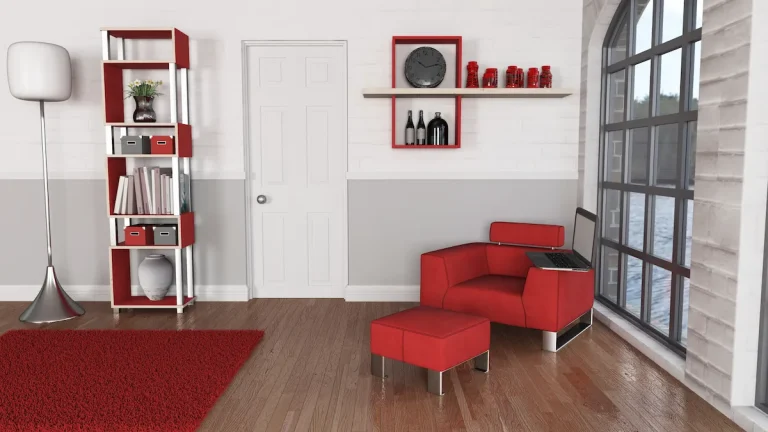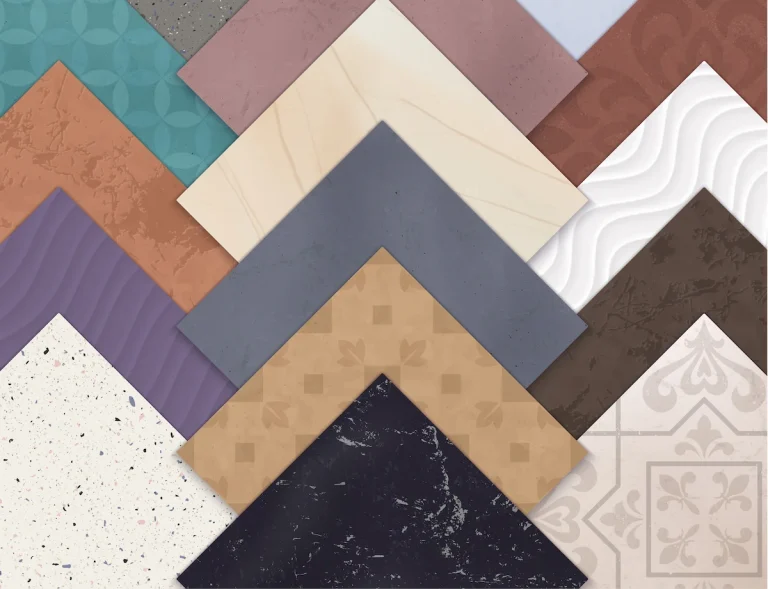If you’ve ever accidentally spilt paint on your laminate floor, you know how frustrating it can be to try to remove it. How to get paint off laminate floor?
In this article, we will discuss why it is important to remove paint from laminate floors and how to properly prepare for the task. We will explore the tools and materials needed, as well as the precautions that should be taken.
We will detail various methods for removing paint, along with tips and tricks to make the process easier. We will provide some advice on preventing paint spills in the future. Let’s get started on restoring your laminate floor to its original beauty!
The Reason You Need to Get Paint Off Laminate Floor
Removing paint from a laminate floor is crucial because dried paint can damage the top wear layer, leading to moisture penetration, which can cause long-term damage to the laminate flooring.
Once the paint dries on the surface, it can bond to the wear layer of the laminate, making it challenging to remove without causing further harm. If left unattended, this can compromise the protective properties of the wear layer, leaving the underlying structure vulnerable to moisture seepage and potential warping.
Moisture is a significant threat, as it can weaken the integrity of the flooring, leading to swelling, buckling, or even mould growth. Regular cleaning and maintenance routines are essential to preserve the longevity and visual appeal of laminate floors.
How to Get Paint Off Laminate Floor: Preparation
Preparing to remove paint from a laminate floor involves gathering the necessary tools and materials and taking appropriate safety precautions to ensure an effective and safe cleaning process.
a. The Tools and Materials Needed
What to use to remove paint from laminate flooring? To effectively do this, you will need tools and materials such as a scraper, a paint remover, and a suitable cleaning solution.
The scraper is essential for physically removing the layers of paint from the surface without damaging the laminate underneath.
A paint remover is a chemical solution that helps break down the paint for easier removal, often speeding up the process.
A suitable cleaning solution is needed to ensure that all residue from the paint removal process is thoroughly cleaned, leaving the laminate flooring free of any lingering chemicals or debris.
These tools and materials work in tandem to efficiently and effectively remove paint from laminate flooring, restoring its original appearance.
b. The Precautions that Should be Taken
When removing paint from a laminate floor, it’s important to take precautions such as wearing protective gear to avoid contact with chemicals and ensuring adequate ventilation.
Chemicals used in the paint removal process can be harmful if proper safety measures are not taken. Protective gear such as gloves, goggles, and respirators should be worn to prevent skin and eye irritation, as well as respiratory issues. It is also vital to work in a well-ventilated area or use ventilation equipment to minimise exposure to fumes. Following the manufacturer’s instructions for the paint removal products and having a clean-up kit ready in case of spills or accidents can further enhance safety precautions.
How to Get Paint Off Laminate Floor: Guide
There are several methods to remove paint from laminate flooring, each suited for different types of paint and the extent of the paint spill.
1. Using a Chemical Paint Remover
Using a chemical paint remover can be an effective solution for removing stubborn paint stains from the laminate surface.
When using a chemical paint remover, it is important to prioritize safety above all else. Make sure to wear protective gear such as gloves, goggles, and a mask to shield yourself from harmful fumes. Work in a well-ventilated area to reduce exposure to potentially toxic chemicals.
These removers are most suitable for removing oil-based paints, varnishes, and enamels. Be cautious when using them on delicate surfaces like antique furniture or materials prone to damage.
Before application, carefully read the manufacturer’s instructions and conduct a spot test to ensure compatibility and prevent unintended damage to the laminate surface.
2. Using Heat to Soften the Paint
Applying heat to the paint can soften it, making it easier to remove from the laminate floor without damaging the surface.
When using a heat gun or hairdryer, it’s important to adjust the temperature to a medium setting to prevent overheating the paint. Start by holding the heat source a few inches away from the painted area and move it around in a slow, circular motion. Be cautious not to concentrate the heat in one spot for too long as it may cause the laminate to warp or discolor.
As the paint softens, gently scrape it off with a plastic putty knife or scraper. Work carefully to avoid scratching the underlying laminate. For stubborn paint spots, you can reapply heat and repeat the scraping process until the surface is clean.
3. Using a Scraper or Putty Knife
A scraper or putty knife can be used to gently lift and remove dried paint particles from the laminate flooring.
When using a scraper or putty knife for this task, it’s important to hold the tool at a low angle to prevent scratching the surface. Begin by applying light pressure and gradually increase it as needed, being mindful not to gouge the flooring.
Regularly check the blade or edge of the tool to ensure it remains sharp for efficient paint removal without causing damage. Take your time and work in small sections, moving methodically across the floor to achieve thorough paint removal. Remember to clean the scraper or putty knife periodically to prevent spreading paint residue while working.
4. Using a Cleaning Solution
A homemade cleaning solution made of vinegar, water, and washing-up liquid can be an effective cleaner for removing paint from laminate surfaces.
To create this solution, mix equal parts of vinegar and water in a container. Then, add a few drops of washing-up liquid to the mixture. The acidity of vinegar helps break down the paint, while the washing-up liquid aids in lifting it off the surface.
It’s essential to test the solution on a small, inconspicuous area first to ensure it doesn’t damage the laminate. Once confirmed, apply the solution to the painted area using a cloth or sponge, gently scrubbing in a circular motion. Rinse the surface with clean water and dry it thoroughly.
How to Get Paint Off Laminate Floor: Tips and Tricks
To ensure the effective removal of paint from a laminate floor, there are several tips and tricks that can help streamline the process and protect the flooring.
a. Test on a Small Area First
Before applying any paint remover to a large section, it’s advisable to test it on a small area of the laminate flooring to ensure it does not cause damage.
This precaution helps in preventing potential mishaps and protects the integrity of the entire flooring surface.
Conducting a patch test is a simple yet crucial step in the paint removal process, providing valuable insights into the product’s compatibility with the surface material. To perform a patch test, first, choose an inconspicuous spot on the laminate flooring, preferably in a corner or under furniture. Apply a small amount of the paint remover using a cotton swab or cloth, then wait for the recommended time specified on the product label.
b. Work in Small Sections
When removing paint from a laminate floor, working in small sections can help manage the process more effectively and prevent spreading the paint further.
By focusing on small areas at a time, you can maintain better control over the removal process. This approach allows you to concentrate your efforts, ensuring thoroughness and precision. Segmenting the work area not only enhances efficiency but also minimizes the chances of missing spots or causing accidental damage.
c. Use Protective Gear
Wearing protective gear such as gloves and masks is essential when handling chemical paint removers to ensure safety and avoid exposure to harmful substances.
It is crucial to choose the appropriate protective equipment that provides a barrier between the skin, eyes, and respiratory system from potential hazards.
- Protective gloves should be chemical-resistant to prevent direct contact with the skin.
- Masks or respirators are necessary to avoid inhaling toxic fumes or particles released during the paint removal process.
- Wearing protective eyewear can safeguard the eyes from splashes or airborne chemicals that may cause irritation or damage.
d. Clean Up Thoroughly Afterwards
After successfully removing the paint, it’s important to clean up thoroughly to remove any remaining paint particles and ensure the laminate floor is spotless.
This can be achieved by using a mixture of warm water and mild detergent to mop the floor, making sure to pay extra attention to any stubborn paint spots.
White vinegar diluted in water is also effective for breaking down paint residue without damaging the laminate.
For tougher stains, you can try using a gentle abrasive cleaner, such as baking soda paste, applied with a soft cloth and rinsed off thoroughly with clean water.
Preventing Paint Spills on Laminate Floor
Preventing paint spills on a laminate floor is the best approach to maintaining the flooring’s condition and avoiding the need for extensive clean-up.
One effective preventive measure is to lay dust sheets or polythene sheets on the floor before starting any painting project. This simple step creates a protective barrier between the paint cans and the laminate surface. Ensuring proper containment of paint cans by placing them on stable surfaces or using trays can further reduce the risk of spills.
Another useful technique is to apply protective layers to the laminate surface. This can be achieved by using products like masking tape or specialised laminate sealants to shield the flooring from accidental drips or splashes. By incorporating these preventive measures into your painting routine, you can safeguard your laminate floor from potential damage and minimise the need for costly repairs.
Conclusion
Whilst removing paint from a laminate floor can be challenging, using the right methods and precautions can ensure an effective and safe clean-up process.
Preparation is key when it comes to paint removal on laminate flooring. Taking the time to gather the necessary tools and materials before starting the process can save you time and prevent any unnecessary damage. There are several methods available for removing paint from laminate floors, such as using solvents, heat guns, or scraping tools. Placing protective coverings on the surrounding surfaces can help prevent any potential spills and splatters during the paint removal process.

See product: Quick-Step Creo Louisiana Oak Beige
While there are various methods to address this issue, upgrading to high-quality laminate flooring can be the best solution. Laminate floor is not only easier to maintain but also enhances the aesthetic appeal of your space.
At TEKA Flooring, we provide a premium selection of laminate flooring built to handle everyday challenges, including accidental paint spills. Our high-quality laminate is designed for durability, easy maintenance, and an exceptional appearance.
Don’t let dried paint damage your surfaces or affect your mood. Switch to TEKA Flooring’s top-quality laminate and notice the difference. Visit our store or website to browse our wide range and find the ideal laminate flooring for your needs!
Read also:


























